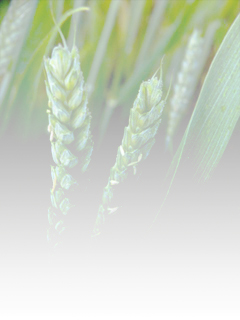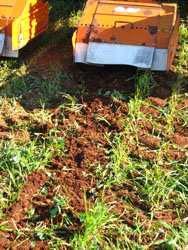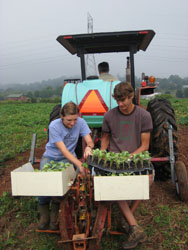Living Mulches for Reduced-Till,
Organic Broccoli Production
(Broughton, Deyton, Bates, Eash and Wszelaki) |
|||||
|
The objectives of this study are: 1. To develop reduced-till broccoli production systems that utilize spring-planted cool season legumes as a living mulch. 2. To test whether oversowing a cool-season cover crop into the cool-season living mulch increases weed, insect and disease control. 3. To quantify yield and water use efficiency for broccoli produced in a reduced-till, living mulch system versus a tilled, green manure system. The field was sown into a bi-culture of Austrian winter pea and triticale in Fall 2008. In the spring, broccoli was transplanted into either conventionally tilled or strip-tilled plots. Two living mulch treatments, annual ryegrass and red clover, were broadcast on the day of planting; one treatment received no living mulch. Data on weed and insect relative abundance, disease prevalence, photosynthesis, plant nitrate concentration, percent cover by living mulches, soil temperature and soil moisture were measured. In Fall 2009, the field has been sown into a bi-culture of winter oats and crimson clover. In Spring 2010, the project will be replicated adding additional treatments: red clover and annual ryegrass strip-till treatments will be sown 2 weeks prior to broccoli planting and on the day of planting to assess differences in establishment of living mulches sown on different dates.
|
|
|||





